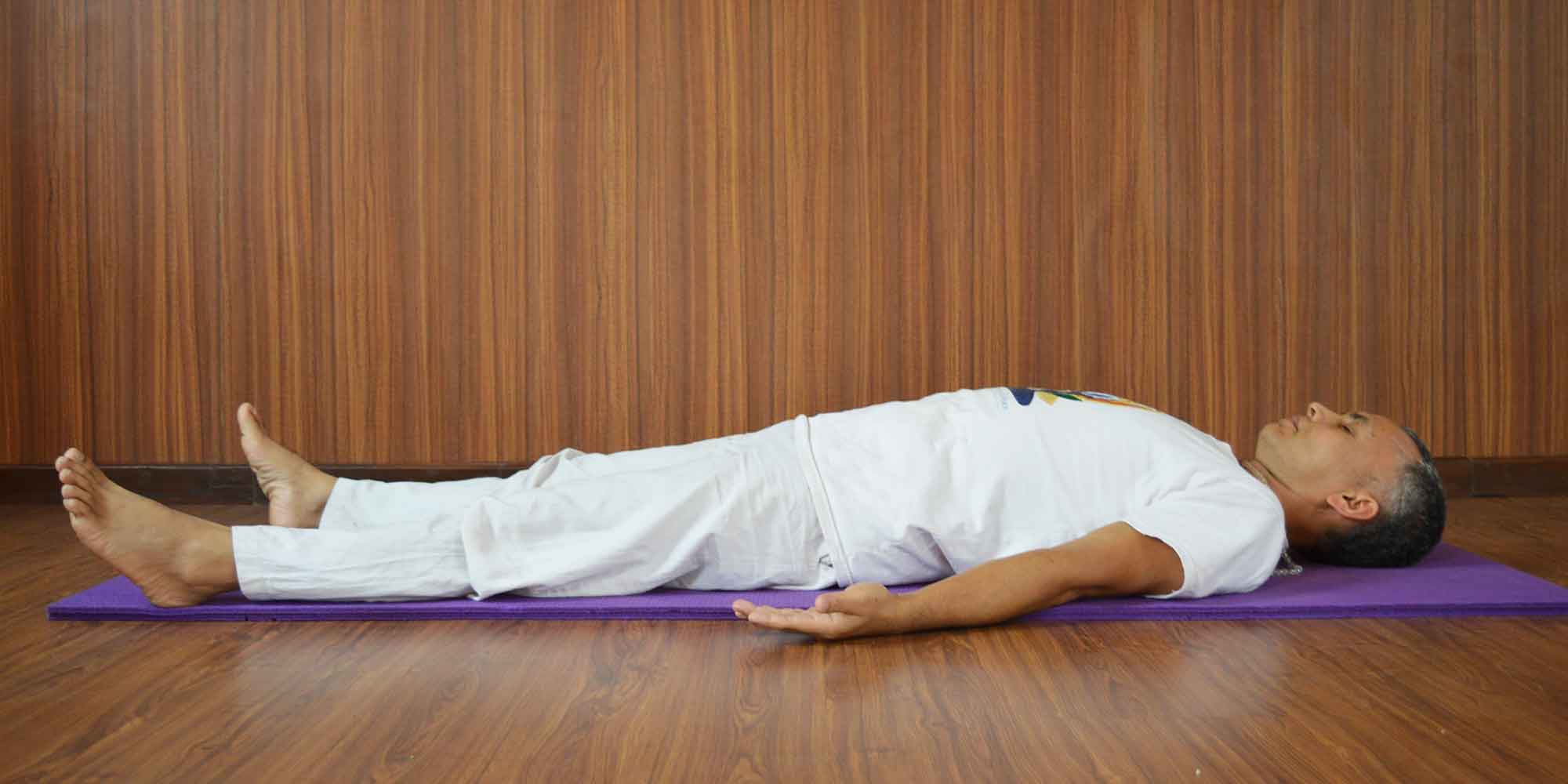MRITASANA – CORPSE POSTURE (SHAVASANA)
22 Nov 2020 HYN Himalayan Yoga Academy

MRITASANA – CORPSE POSTURE (SHAVASANA)
Introduction:
Mritasana, ‘Mrit’ – Corpse/dead body; Asana – Pose; Corpse Pose, or is an asana in hatha yoga and modern yoga as exercise, often used for relaxation at the end of a session. It is the usual pose for the practice of yoga nidra meditation as well.
Mritasana, or shavasana is the Sanskrit name for an important restorative asana. It is a key component of asana practice in almost every yoga tradition, and is most commonly used at the end of a sequence as a means of relaxation and integration.
This pose gets its name from the recumbent posture of a dead body. It is a position of rest and relaxation, and is usually practiced towards the end of a yoga session – a session that typically begins with activity and ends in rest; a space or pause when deep healing can take place.
Mritasana in Core levels:
Mritasana / Shavasana is believed to stimulate the muladhara (root) chakra, since the entire length of the body is connected with the earth. Energizing this chakra through shavasana is deeply grounding, and cultivates the inner stillness and stability necessary for personal growth.
While giving a class the teacher can also chant a mantra and ask the students to focus on the sound and the vibrations it produces in the body, this is particularly helpful for beginner students who find it difficult to calm the mind.
Mritasana is particularly useful for a full body reset. If you are able to enter into 5 minutes of proper mritasana/savasana, you can remove the fatigue and stress from the body, get back up energized ready to carry on.
How to do the Mritasana / Shavasana (Corpse Pose)
There are three phases while doing Mritasana
1. Deha Dharana (Body Preparation / Relaxation Phase)
2. Prana Dharana (Breath & Energy Relaxation Phase)
3. Mano Dharana (Mind Relaxation Phase)
-Lie flat on your back in supine pose, preferably without any props or cushions. Use small pillow below your neck if absolutely required. Keep feet apart, hands besides the body upward facing, Keep the back, neck and head in a straight line; Close your eyes.
-Keep your legs comfortable apart and let your feet and knees relax completely, toes facing to the sides.
-Taking your attention to different body parts one by one, slowly relax your entire body.
-Begin with bringing your awareness to the right foot, move on to the right knee (as you –complete one leg, move your attention on to the other leg), and so on, and slowly move upwards to your head, relaxing each part of the body.
-Keep breathing slowly, gently, deeply and allow your breath to relax you more and more. The incoming breath energizes the body while the outgoing breath brings relaxation.
-Drop all sense of hurry or urgency or any need to attend to anything else. Just be with the body and the breath. Surrender the whole body to the floor and let go. Make sure you don’t fall asleep!
-After some time, about 2 to 12 minutes when you feel fully relaxed, keeping your eyes closed; slowly roll onto your right side. Lie in that position for a minute or so.
-Then, taking the support of your left hand, gently sit up into a seated pose such as Sukhasana (Easy Pose) or Sahajasana (Comfort Pose).
-Keep your eyes closed and take a few deep breaths in and out as you gradually become aware of your environment and the body. When you feel complete, slowly and gently open your eyes.
Although the aim of savasana is to give rest to body and mind, it is in fact considered to be a somewhat active pose in which the practitioner should remain fully conscious and not fall asleep.
Various techniques can be employed for keeping the awareness focused and functioning during the Mritasana.
Improving memory, focus and concentration
Providing deep relaxation
Rotation of consciousness around the body parts just like in Yoga nindra
Focusing on internal sounds of the body
Chanting a mantra in the mind with complete focus on the mantra
Fixing your gaze at the third eye or any other energetic point/chakra on the body
Benefits of the Corpse Pose – Savasana
This posture brings a deep, meditative state of rest, which may help in the repair of tissues and cells, and in releasing stress.
It also gives time for the yoga workout to sink in at a deeper level.
Increasing energy and productivity.
Savasana relieves physical and mental stress that builds during a workout.
Lowering blood pressure.
Relief from stress, headache, fatigue and insomnia.
This posture leaves you in a state of rejuvenation.
It is the perfect way to end a yoga session, particularly if it has been a fast-paced one.
It helps reduce blood pressure, anxiety, and insomnia.
This is an excellent way to ground the body and reduce the Vata dosha (imbalance of the air element) in the body.
Note: 1 minute to 7 minutes practice is normally called Shavasana and more than 10 minutes to more normally 90 minutes will be Yoga nidra Practice.
